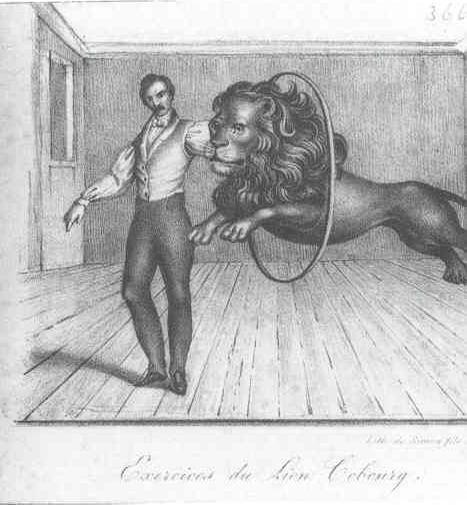“All the world’s a stage, / And all the men and women merely players.”
Don’t worry, you didn’t miss a line while you were reading. This particular quote is from one of Shakespeare’s other plays, As You Like It. However, it perfectly sums up The Taming of the Shrew.
It can be argued that everyone plays a part in The Taming of the Shrew and that the actors are performing a play within a play. I say “it can be argued” because there are different approaches to analyzing some of the main characters.
In this post, I’ll show you a few of those approaches and explain how to write about four The Taming of the Shrew characters: Katherine, Petruchio, Bianca, and Lucentio.
(If you need to write about themes, read 3 Taming of the Shrew Themes to Look for and Write About.)
Choose Which of The Taming of the Shrew Characters to Analyze

Picking the right character to write about is crucial. You’ll have more fun writing your essay if you’re particularly drawn to one character over the others. You’ll also be able to find better support.
But how do you choose a character?
First, you want to make sure the character is present enough in the text to warrant an essay. Sure, it’s possible to write about minor characters, but it’s not easy. You’ll have to dig deeper for evidence for your analysis. So it’s best to stick with a main character.
It’s also easier to write about a character you’re passionate about. Whether you identify with the character or absolutely hate the person, that passion goes a long way in writing your analysis.
But what if you don’t really care about any of the characters?
If you’re completely apathetic to the entire cast, go with the character you can write the most about from an evidence-based perspective.
When you look for the character with the most evidence to support your analysis, you’ll have much more to write about, which should make the process easier.
It’s that simple.
So who are the best characters to write about? Here are my four favorites.
Katherine
Katherine Minola, or Kate, is one sharp cookie. She’s incredibly intelligent and is not afraid to speak her mind. Unfortunately, she’s angry and not very nice. And back in Shakespeare’s day, this tendency made her quite an outcast.
Kate is angry for a few reasons, one of which is her father clearly favors her younger sister, Bianca. This jealousy makes her prone to tantrums and fights with Bianca.
Kate tries to hide her pain with anger or bitterness. Because of her anger, no one seems to like her. But because no one seems to like her, she gets angry. It’s a vicious cycle.
At the point that Kate starts changing her ways, readers are divided about what’s actually going on. Some say she starts becoming more obedient. Others see her behavior shift as a ploy to act obediently, but really, it’s a way to get what she wants.
The pivotal moment is when Petruchio and Kate go on a trip to see Kate’s dad.
Petruchio starts saying things as if they’re the opposite of what they are—for example, telling Kate the sun is the moon and that an old man is a young virgin woman. And he expects Kate to agree with his nonsense!
Kate decides to go along with the opposite game. She finds out that, when she plays along with Petruchio, she gets what she wants—and avoids punishment.
By the end of the play, Kate seems to have gone through a total transformation. Seems to.
This is where scholars argue about Kate’s intentions. Either she has been brainwashed into giving up her surly ways and conforms to 16th century ideas about the doting wife, or she just does what Petruchio asks so that she can get what she wants.
Both points can be argued, but if you want to write about Kate, you have to back your case up with evidence from the text.
Petruchio

Oh, Petruchio. He’s the kind of person who’s both likable and a total jerk. His humor and love of language make him seem like a good match for Kate, and we want to root for him until he starts treating her poorly.
Petruchio first rolls into town saying that he wants to marry for money, and even the shrewish Katherine is tolerable for the right price (dowry). He eventually courts and marries Kate, but abuses her by starving her and refusing to let her sleep—all because she doesn’t obey him.
Petruchio understands the whole time that society and its rules are all an act, and the people must be convincing actors if they are to do well. The first indication that he’s playing society’s act is his intention to marry for money.
While this might be true, he actually does enjoy Kate’s company and her wit, which he sees as pretty well-matched to his. But because Kate is not very good at “acting” like a proper lady, he decides to “tame” her.
Some say that by taming the so-called shrew of a woman, Petruchio is teaching Kate how to act like a lady in public, which leads her to find better social standing. Others argue that he’s truly trying to break her spirit by abusing and brainwashing her into doing what he wants.
Like with Kate, you can write about Petruchio both ways as long as you gather the evidence to back it up.
Bianca

Bianca is Kate’s more popular little sister, and she’s also putting up an act, especially around her father. Her father thinks she’s an innocent angel and even wants to preserve her purity by saying that she can’t get married until after Kate does.
In order to court her, Lucentio and Hortensio act like tutors. Bianca hides their courtship from her father because it’s proof that she isn’t the perfect, pure daughter her father views her to be.
Bianca’s pleasantness also tricks her suitors into thinking she’ll be a good (obedient) wife. This is proven false at the end of the play when Lucentio calls for her and she refuses to come to him. As small an act of defiance as that is, it’s enough to prove that Bianca isn’t what she seems.
Lucentio
Out of all of the The Taming of the Shrew characters on this list, Lucentio is the one who’s literally acting in the text. He disguises himself as a tutor in order to secretly court Bianca.
Beyond him playing the role of a tutor, Lucentio’s idea of love can also be seen as theatrical. He believes love is something you feel right away and that no amount of money can buy it.
But as it turns out, this ideal is impractical and doesn’t lead to a happy marriage (happy in a 16th century kind of way, that is). When Bianca refuses to come to him when called, it doesn’t just speak to her defiance, but also to the illusion of their entire relationship.
How to Analyze The Taming of the Shrew Characters
To write your The Taming of the Shrew analysis, follow these simple steps to build your case:
- Choose the character you want to write about,
- Once you’ve chosen your character, think about specific aspects and qualities you want to focus on.
- Start rereading the text, noting those aspects.
- Be sure to include specific quotes and page numbers for reference later. This will serve as your support.
- Organize your supporting evidence into groups, which will form the basis of your main arguments.
- Finally, organize your evidence into an outline, which will not only keep your thoughts in order but will also make the writing process quicker and easier.
If you’re writing about Bianca, for example, you might argue that her lying to her father and not coming to Lucentio when called are evidence that she has been acting like a lady the whole time when, really, she was the “shrewish” sister.
Once you’re finished organizing, it’s time to start writing. With your ideas and evidence all mapped out, the only thing you have to concentrate on is making your writing sound nice and flow together.
Just make sure you’re analyzing and not just summarizing.
More Resources to Tackle Your The Taming of the Shrew Character Analysis
If you’re at a loss for inspiration and want to see real examples of how others have written about these The Taming of the Shrew characters, browse through the following example essays:
- Character Analysis of Kate in Taming of the Shrew
- An Examination of the Character of Petruchio in Taming of the Shrew
- The False Identity of Lucentio from The Taming of the Shrew and Tom from The Talented Mr. Ripley
Need some help with the actual writing part to keep your analysis on track? Try these posts:
- How to Write a Character Analysis That Works
- 2 Character Analysis Essay Examples with Character (with annotations)
- Literary Analysis Essay Tips from a Kibin Editor
And as always, if you need help taming your essay, the Kibin editors are happy to assist. They’ll make sure it adheres to the rules of style, grammar, punctuation, and flow.
Good luck!



